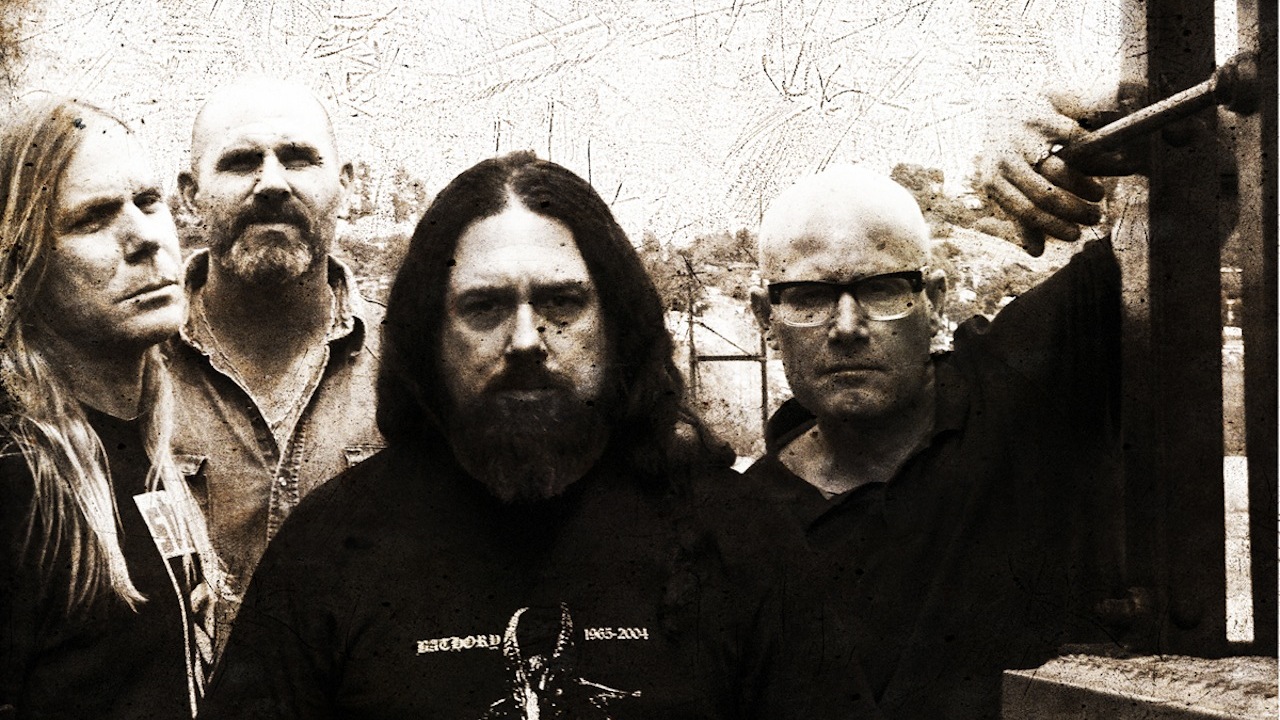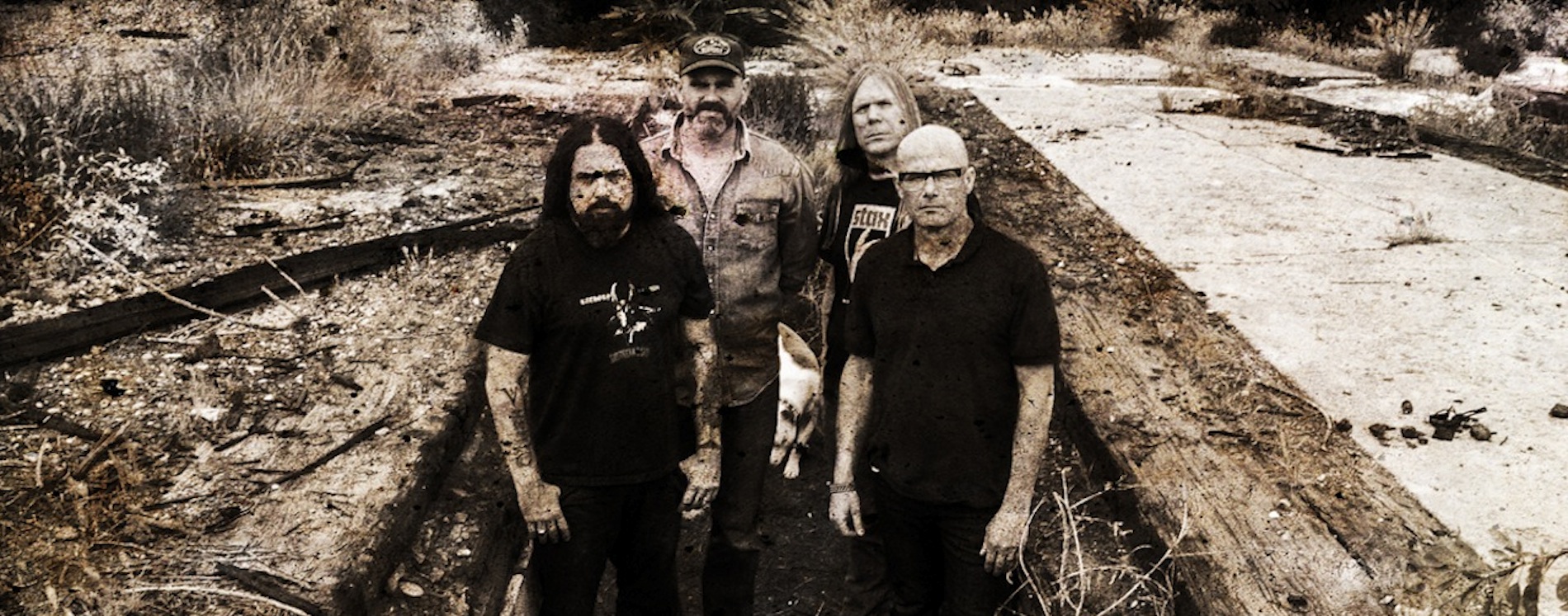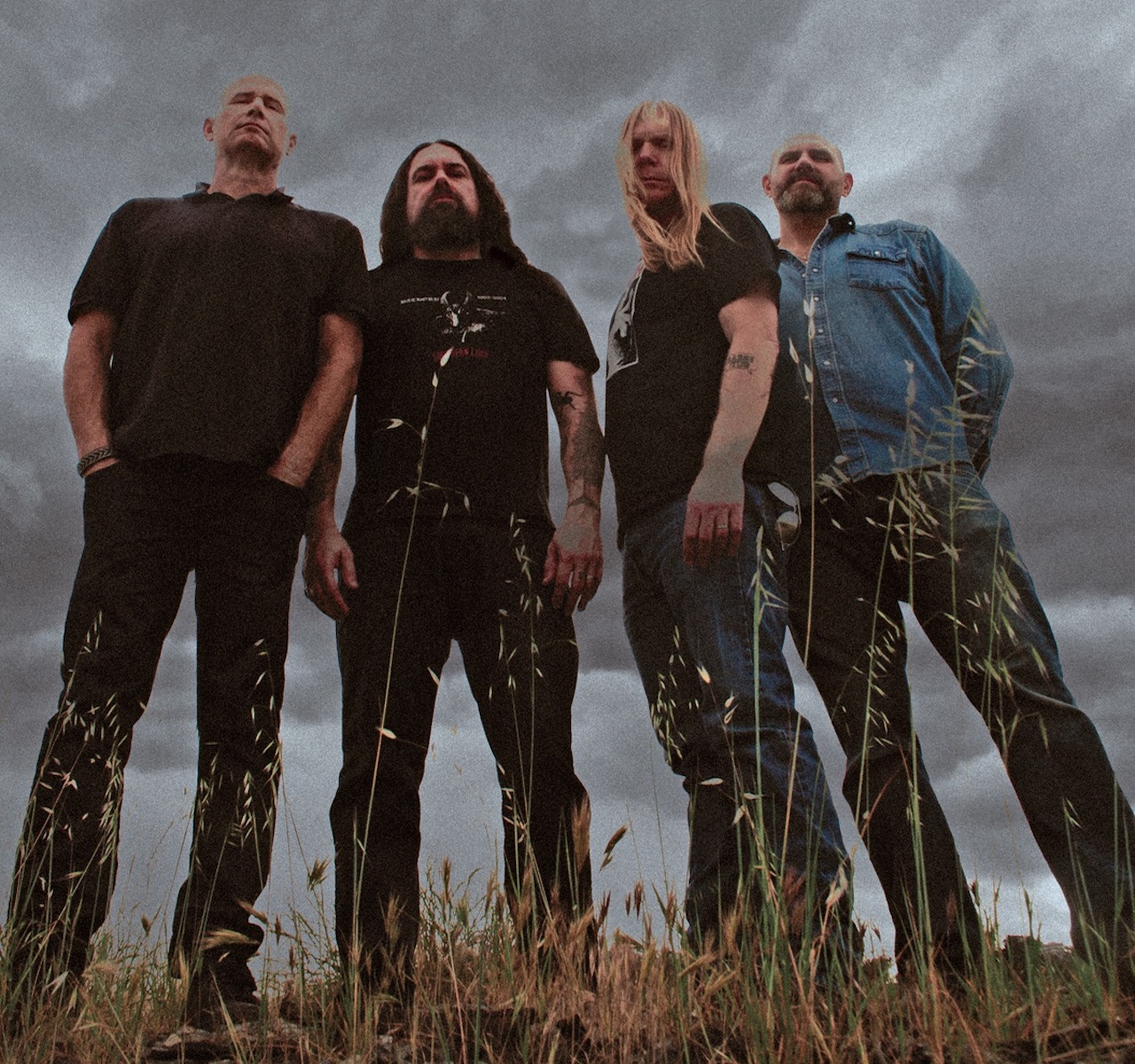Goatsnake: The Desert Soul
Linking the DC hardcore scene to the vast spaces of the Mojave desert, Goatsnake were one of the most revered of stoner/doom bands. Fifteen years after their last album, the band are back.

Out amidst the cacti in the sun-baked Californian desert there stands a mythical recording studio. Rancho De La Luna, co-founded in 1993 by Fred Drake and David Catching, fast became the spiritual home of the pioneering desert rock scene, and as such was featured in Foo Fighters mainmain Dave Grohl’s HBO series Sonic Highways, a musical tour of the USA taking in as many legendary stories and studios as it could possibly fit.
In covering both the desert and Washington DC, a city renowned for its legendary status within hardcore, Grohl touched on two places of extreme significance for Goatsnake frontman Pete Stahl, who featured in the series; a man with a musical legacy all of his own.
“I feel like my whole life has been on the road,” he says. “I’ve been touring now, believe it or not, for 30-something years; it’s crazy. My dad managed rock’n’roll bands in the 60s, so I’ve been around music ever since I was a little kid.”/o:p
Whilst at first Pete’s soulful croon might sound at odds with the pared-down, sludgy grooves of Goatsnake guitarist and legend in his own right, Greg Anderson (being one half of Sunn O))) and co-founder of Southern Lord records), theirs is a relationship that quickly reveals itself to be a sublime combination, as attested to by Goatsnake’s rapid ascension to kings of the West Coast doom/stoner scene in the late 90s.
Pete’s path to joining the band was long and winding, enduring countless hours on the road. Starting out in the DC hardcore scene with his band Scream, they became notorious not only for their contribution to that special time and place, but also for their onetime drummer, the aforementioned Mr Grohl./o:p
“I got to play with Dave when he was younger,” recalls the frontman. “We did a lot of stuff together and learned a lot about life touring in Europe. At times it was rough, but that made us a force to be reckoned with. We crashlanded in LA a good 15 years later, exhausted and needing a new life. That’s when Dave joined Nirvana. Living on the West Coast introduced me to new people. I met Josh Homme and we started playing together with Wool, Kyuss and The Obsessed. Scream and The Obsessed started out together in the early 80s. The real thread from Scream to Goatsnake is The Obsessed; their rhythm section ended up being ours. It’s all connected.”/o:p

Genre tags such as ‘hardcore’ and ‘stoner rock’ can be restrictive, making musical styles seem distinct. Pete’s experiences prove the opposite. His hardcore roots led him into the desert, to the Rancho, where as part of that scene he would record several albums with Wool, Josh Homme’s Desert Sessions, and Earthlings?: experiences that eventually led him to Goatsnake.
Sign up below to get the latest from Metal Hammer, plus exclusive special offers, direct to your inbox!
“Goatsnake’s always been about playing heavy music in a different way,” says Greg. “When we first started we were really into heavy music. We thought to ourselves we could easily get a heavy vocalist, but wouldn’t it be cool if we contrasted the music with something soulful and melodic? That’s where Pete came in. We were all fans of his previous bands, so when we asked him we were a little nervous; I wasn’t sure if he would be into this sludgy stuff, but he was like [cue surprisingly good Pete impression], ‘Oh man it’s great, kinda reminds me of Pentagram!’ He just fit right in.”/o:p
Legacy might be the key to understanding Goatsnake, but the real question is: where the hell have they been? Their last full-length, 2000’s Flower Of Disease, was released to much acclaim. Soon after, the band dissipated. For 15 years, they’ve remained a frustrating fan favourite, popping up now and then, before dissolving once again into the aether. It was 10 years before they played again, appearing at Roadburn in 2010, before disappearing for another five. Why?
“Life gets in the way,” explains Pete. “Everyone’s got jobs, you gotta take care of your family, everybody’s got shit on. Right now, everyone had the time, the moment came about. It’s the first time we’ve written a record where we’re all in the same room! Before it was piecemeal; I’m a tour manager and the band suffers ’cos I’m always on the road, so they’d send me tunes, but this time we jammed shit out and shaped the songs together.”/o:p

For Greg, it was a desire to not retread old ground that fuelled their return. “The Roadburn show was the catalyst. It meant a lot that people still wanted to hear music we wrote in the late 90s, but I didn’t want to be a tribute act. I thought it’d be interesting to see if we could get together and actually write new music. It came really quickly. It was fun! We’re all older dudes now and we’ve gone through a lot of stuff in our lives over the past 15 years. I thought it would be very interesting to see what the music sounded like given everyone’s experiences.”
Balancing life’s demands is a struggle with which we can all identify. When a record like Black Age Blues comes around, one that spins away your problems for the duration of its run time, it’s a sacred thing. It’s Goatsnake’s most joyously loose record to date – the band sound liberated, like they’re having more fun than they’ve had in years… to which Pete and Greg were more than happy to attest.
“This was the first time we travelled somewhere to record,” says Pete. “We went down south to Nashville, Tennessee, and that kind of permeates the record, that vibe. It was real fun for us. It was kind of like a mini-vacation. Everyone got to get away from home and work and fucking have some fun, so fuck yeah!”/o:p
That vibe is tangible in every moment of a record steeped in a diverse musical heritage that reaches back to Black Sabbath, and then further, to the origins of rock’n’roll to the birthplace of the blues. It’s an element of utmost importance to Greg.
“Goatsnake is a traditional band, following a lineage. My work with Sunn O))) doesn’t follow any of those traditions. There’s not a lot of structure, no discernible tempo oftentimes. I’ve a lot of respect for the other guys in Goatsnake. We bond on the fact we’re all fanatical about music. It’s what holds us together.”
It’s funny how things work out. For Goatsnake, life always got in the way, preventing them from embracing a good thing. Now, a matured perspective seems to have made them realise it. Goatsnake can be their escape, their desert retreat. This album has brought about a flush of inspiration. Greg seemingly can’t get ideas down fast enough.
“This last round of songwriting and recording has been inspiring in a lot of ways. Goatsnake was never prolific, it took us forever to come up with material, but now I feel like we’re on a roll. The other day we were like, ‘Let’s work on some new stuff!’ and we just jumped right into it.”
Pete may once again be out on the road, but the time and place of their future reconvening couldn’t be more appropriate, Greg revealing the details of a plan that brings their future full circle with their past: “I think we’re gonna be trying to do some recording in the desert at the Rancho De La Luna before the end of the year, with some new material.”/o:p
For Pete in particular, that will be a special time. The song House Of The Moon from Black Age Blues is an obvious reference to his spiritual home.
“I struggled with that song,” he admits. “It took me a while to find out what it was going to be about. My friend Fred Drake, rest in peace, named the studio. I’m singing about a place that’s very special to me. There’s a huge connection between me and the desert. There always will be; on every record there are a few songs that reference that.”
Before then the summer festival season will hit, finding the band taking time out of their lives to tour Europe once more, with a spot on UK shores at Temples festival in May. If you can make it, be there, because for all of their recent inspiration, you never know when this special band will once again slither from your grasp, despite Greg’s promises: “I really try as much as possible to play music. The band is older and we all have jobs and families, so we’re not going to be out there in a van slugging it out. It was great in our 20s but we can’t do that anymore! So we’re going to do what we can. We’re going to play as much as possible.”
BLACK AGE BLUES IS RELEASED ON JUNE 1 VIA SOUTHERN LORD/o:p
THE SPECIAL RANCH
Three classic albums recorded at the Rancho De La Luna…
QUEENS OF THE STONE AGE : QUEENS OF THE STONE AGE, 1998
There were even more bleary eyes than usual in the stoner rock scene when, in 1995, Kyuss split; a band for whom Josh Homme’s signature guitar style was arguably the heart and soul. His next move was to release this ambitious, riff-loaded debut, simultaneously paying tribute to the past whilst setting his sights on a much bigger future.
VARIOUS ARTISTS: DESERT SESSIONS, VOLS 3&4, 1998
Take your pick of volumes 1-10 of Homme’s desert sessions, each featuring a diverse roster of rock stars there to sample the rarefied vibe of the Rancho, amongst other things. This release featured the vocal talents of Peter Stahl on some blissfully liberated jams.
MIDGET HANDJOB: MIDNIGHT SNACK BREAK AT THE POODLE FACTORY, 2000
Not content with co-founding Black Flag and the Circle Jerks, vocalist Keith Morris’s tastes evolved, leading to the release of this eccentric concoction of jazz/rock and delightfully disenfranchised spoken-word rants. Loose, witty and self-indulgent, it embodies the free-spirited vibe that the Rancho cultivates, and for which it is adored./o:p
